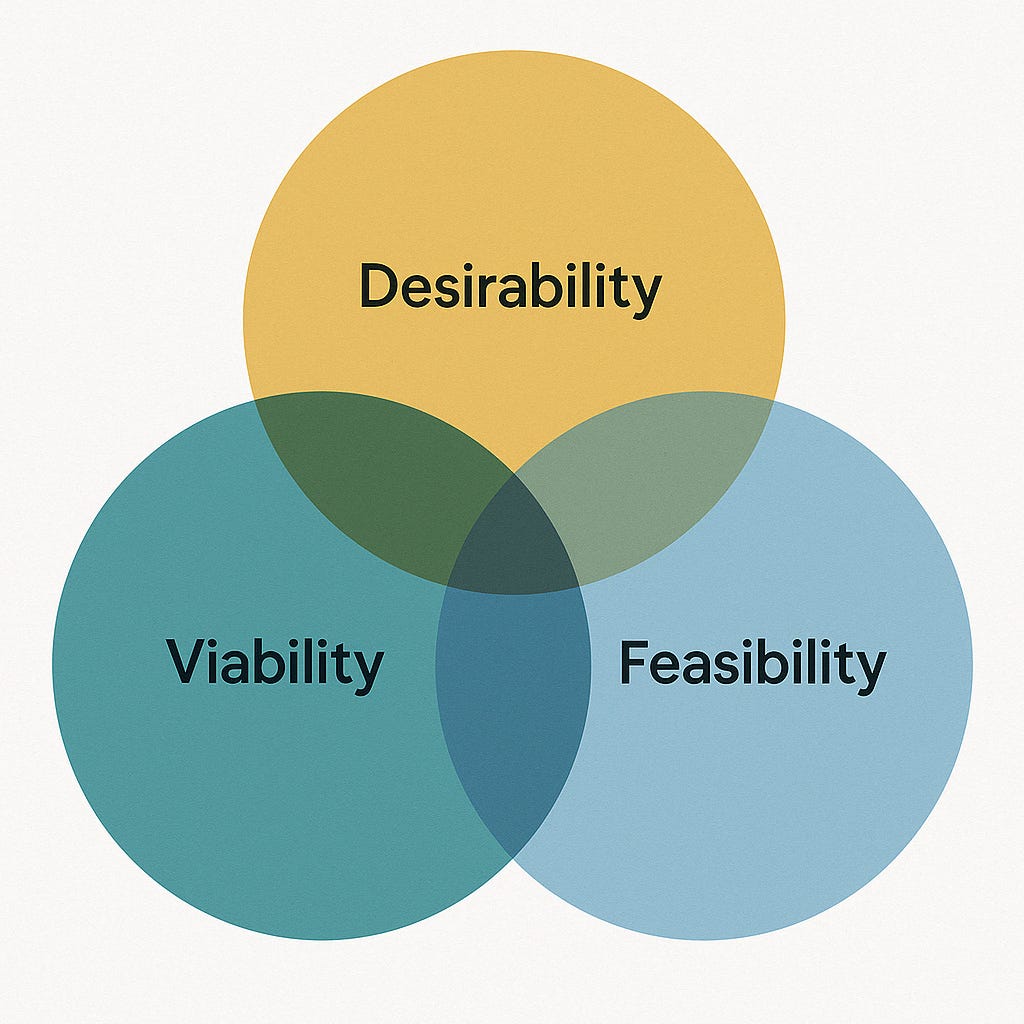The Problem and the Classic Formula
Founders/teams with a backlog full of ideas and 20 different opinions on how to prioritize.
Meanwhile, more user opinions pour in, asking for features, as stakeholders want to know when shipping will happen. The roadmap? It’s starting to look like a plate of spaghetti.
Sound familiar?
In my experience, the key lies in addressing 3 classic questions - Desirability, Viability, and Feasibility.
#1 Desirability : Does this solve a high-impact problem for our users?
Users are the ultimate judges of the success or failure of your product. Therefore, when debating on what to build next, being user-centric is the right mindset.
Every feature and function should serve a user purpose. Beware of features that users say they want but don’t actually solve a problem or help get their core jobs done - they are most likely nice-to-have (that you can of course add at a later stage if you wish).
👉 Explore
Is this problem painful and frequent for our users?
Will solving it change behaviour or create measurable value?
Example
A B2B SaaS team wants to add dashboard customization to match their competitor’s product. However, reflecting on the customers’ job, they realize that their main concern is to look good in front of their boss by quickly generating detailed reports. Though in the survey they say dashboard customization is “very neat”, it is really a nice-to-have. Therefore, this feature is moved off the high priority list.
#2. Viability : Will this move the needle on our business goals right now?
While being user-centric is important, a great user experience does not guarantee business success. You can build great UX and still fail the business.
I ask teams: Does this feature align with where you need to go in the next 3-6 months?
👉 Explore
Will this increase retention, revenue, or reduce churn?
Is it a priority for our business model, not just an interesting idea?
Example:
A startup is considering a viral referral feature. However, they are struggling with onboarding drop-off. Fixing onboarding first is the right choice as it directly addresses a critical business issue. Referral hardly matters if new users are abandoning on day one.
#3 Feasibility : Can this be successfully built, quickly?
Debating between 2 equally good ideas, one approach is to pick the one that you can build quickly. This allows you to speed up the learning cycle while buying time to tackle the other bigger challenge.
👉 Explore
Do you have the technology, skills, and bandwidth to ship this fast?
Are there dependencies or unknowns?
Example:
An innovation team inside a corporate is excited about launching an AI-powered tool. But they don’t have internal AI expertise or clear data yet. Therefore, they shift focus to improving an existing feature - one that they can ship and measure in 4 weeks. This quick win buys them time to explore the bigger, non-urgent challenge.
The Power of These Questions Together
When you answer all three, you align your user needs, business priorities, and team readiness. This is where clarity comes from - you stop chasing what’s interesting and focus on what really matters and what you can execute on.
Quick recap
When debating what to build next, explore these 3 questions:
Does this directly solve a high-impact problem for the users?
Will this move the needle on the business goals right now?
Is the team set up to execute this successfully, fast?




